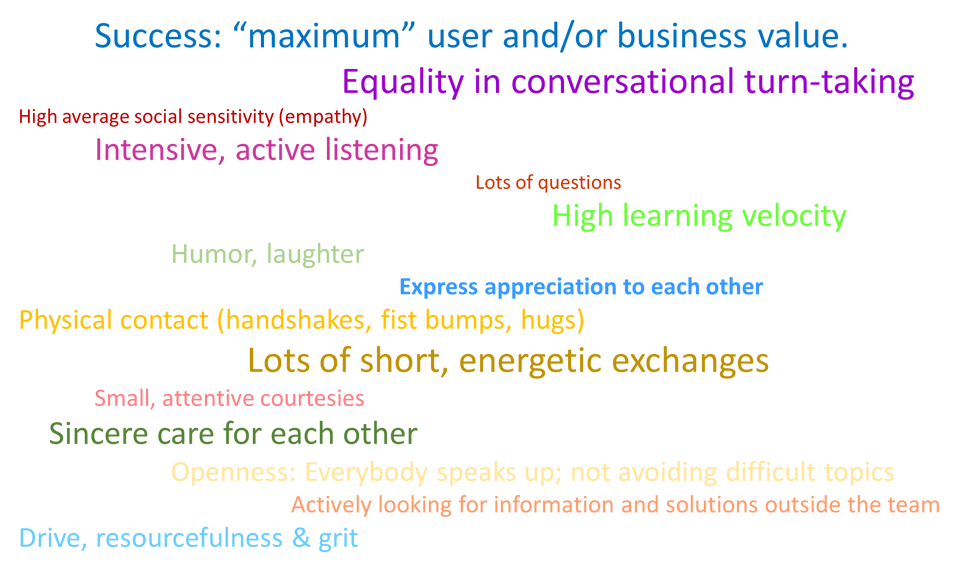Steps in effective agile team building – Part 3
Blog: Capgemini CTO Blog
Norming
In this stage, we expect a sense of identity to emerge and team members to start pulling together.
Rules, ways of working, and norms will develop in an informal way and in formal ways. To enable this process, organize a session in which the team defines a team canvas. This canvas is a visualization of the agreements. It contains:
- Mission: The reason for the teams existence – we are the team for….
- Scope: What type of work we do and what we don’t do?
- Goals: What are our (measurable) goals?
- Values: What is important to us in the way we behave? Agree on a few keystone habits. For example, the three keystone habits of FC Barcelona are: 1. Show humility 2. Work hard. 3. Put the team first. These habits guide all players in their behavior.
- Norms: What are our rules on how we work and deal with situations?
- Team strengths and skills: What are our superpowers?
- Team weaknesses and risks: What are we not so good at?
- How and when we celebrate: Fun events and how we celebrate.

Free download from plays-in-business.com
Go back to this canvas frequently: Do we still stick to our rules? Why not? What do we need to do to improve? Do we need to adjust them?
Enable good decision making. There needs to be a clear process about how decisions are made in the team and this process should be fair. This will prevent continuous power struggles in the team and frustration because people believe their opinion is not taken into account sufficiently.
Performing
In this stage, the team is performing complex tasks without the need for much leadership intervention. In the previous stages the team was focused inward, dealing with their own struggles, but now the team starts to look actively for interaction outside of the team to obtain new ideas, cooperation, etc.
Now and then, team members will return to less effective behavior or will “go their own way” and we have to revisit our agreements and ways of working again. As one of the qualities we selected in the beginning was growth potential, we expect a high performing team to develop and keep growing. The team should believe there is always room for more improvement. Schutz calls this stage the affection stage.
Now, suppose you walk into a room where the team is working, and you would observe them for a while. You will notice several signs that show that there is a highly effective team. These signs are:

In a high performing team it will be easier to on-board new members as the team culture has been formed and a new member is more likely to adapt the successful behavior.
Adjourning
When team members leave or the team is not necessary anymore, there will be an impact on the team members. People for sure will have feelings about this and this “adjourning” process should be carefully guided. Special attention needs to be paid to “saying goodbye” and thanking each other for the achievements, the learnings and joint experiences.
If you’d like to find out more about agile team building, contact me at: rik.pennartz@capgemini.com
Leave a Comment
You must be logged in to post a comment.








